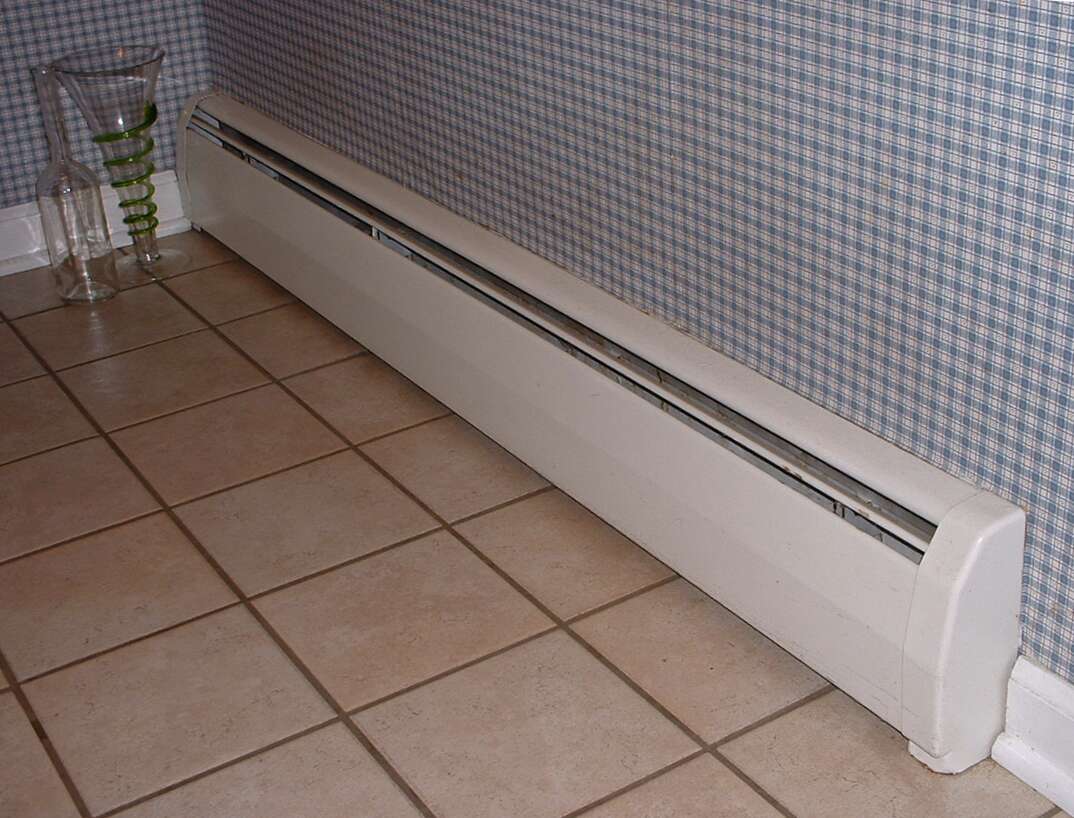- AppliancesElectriciansHVACLandscapingLocksmithPest ControlPlumbingRenovationRoofingT V RepairAll Home Improvement
- Car AccidentClass ActionCorporate LawCriminal DefenseDivorce LawEmployment LawFamily LawFinancial LawLegal AidMedical Injury LawyersMedical MalpracticeReal Estate LawWater Fire RestorationAll Legal
- InvestmentRetirementAll Finance
- Animal InsuranceAutoGeneral InsuranceHealth PolicyHome RentersAll Insurance
- DentalHealth SpecialistsAll Medical
- Animal CareVeterinaryAll Pets
- Auto GlassTowingAll Automotive
How to Clean a Baseboard Heater

Is your baseboard heater looking a little dusty? It might keep chugging along, but your baseboard heater will work more efficiently if you give it a thorough cleanup occasionally.
Read More Heating and Cooling Articles
Figuring out how to clean a baseboard heater isn't very difficult, but it might be something you're unfamiliar with if this type of heating is new to you. Check out how to clean a baseboard heater below.
Things You'll Need
You likely already have what you need to clean your baseboard heater at home. Grab these things before you get started:
- A vacuum with a brush attachment
- A pair of needle-nose pliers
- A soft cloth
- All-purpose cleaner or soapy water
Step-by-Step Instructions
Step 1: Shut It Down
You don't want the heater running while you're cleaning. If it's been running, give the unit time to cool before you start working.
Step 2: Pop Off the Baseboard Heater Cover
The parts that need to be cleaned are hidden behind that cover. You can typically pull it off without any tools by lifting from the bottom and pulling the cover toward you. On some models, you might have to remove the end caps first or unscrew the cover. Set the cover aside out of the way while you work.
Step 3: Vacuum the Inside
You'll want to focus mostly on the fins inside the unit, which is where dust tends to collect. Use the brush attachment to gently remove any debris between the fins. Continue vacuuming any other areas inside the baseboard heater, as well as the floor below it, to get rid of any debris.
Step 4: Straighten Up the Fins
Check for any fins that are bent, even a little. Air can flow more freely when the fins are straight. Using your needle-nose pliers, bend the fins back to their correct position. Keep in mind that the fins are sharp, so work around them carefully.
Step 5: Wipe Spots if Necessary
If you see any dirty areas that didn't come clean with the vacuum, use a slightly damp cloth to wipe those areas.
Step 6: Clean the Cover
You can use an all-purpose cleaner or soapy water to clean the baseboard heater cover while it's off the unit. Dry it well after you're done cleaning it.
Step 7: Replace the Cover
Position it back on the heater once it's completely clean and dry. Reattach it with screws, put the end caps back in place or do other tasks to attach it based on your model.
Step 8: Test the Unit
Turn the power back on and adjust the thermostat to make the heater run. Verify that it's working correctly.
More Related Articles:
- Hiring an HVAC Tech? Here are 5 Top Tips
- What's in My HVAC Technician's Van?
- HVAC Out? 5 Common Causes and Quick Fixes for Each
- How Much Does an HVAC Filter Cost?
- HVAC Upkeep Costs: Everything You Need to Know
How Often Do You Need to Clean Your Baseboard Heater?
It's a good idea to clean your baseboard heater at least once per year. Doing it right before the heating season gives you a fresh start and helps the system run well while it's cold outside. You might need to perform a baseboard heater cleaning more often if your home is particularly dusty or you have pets that shed a lot of hair. Clean the unit sooner if you can see visible dirt and debris building up on it. Cleaning might also help if the heater smells funny or it's not heating as well as normal.
Cleaning the unit is the main baseboard heater maintenance task you'll need to perform. However, you might need to do a few other maintenance tasks, including regular inspections. Make sure nothing is blocking the unit. It's also a good idea to look under and behind the heater to make sure nothing falls back there. Dusting the outside of the unit weekly can help keep the interior fins cleaner. If the heater stops working correctly, you might need to do some light troubleshooting to see if you can correct the issue before calling a repair service.
Elocal Editorial Content is for educational and entertainment purposes only. Editorial Content should not be used as a substitute for advice from a licensed professional in your state reviewing your issue. Systems, equipment, issues and circumstances vary. Follow the manufacturer's safety precautions. The opinions, beliefs and viewpoints expressed by the eLocal Editorial Team and other third-party content providers do not necessarily reflect the opinions, beliefs and viewpoints of eLocal or its affiliate companies. Use of the Blog is subject to the
Website Terms and Conditions.The eLocal Editorial Team operates independently of eLocal USA's marketing and sales decisions.



